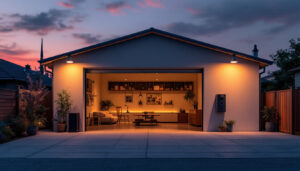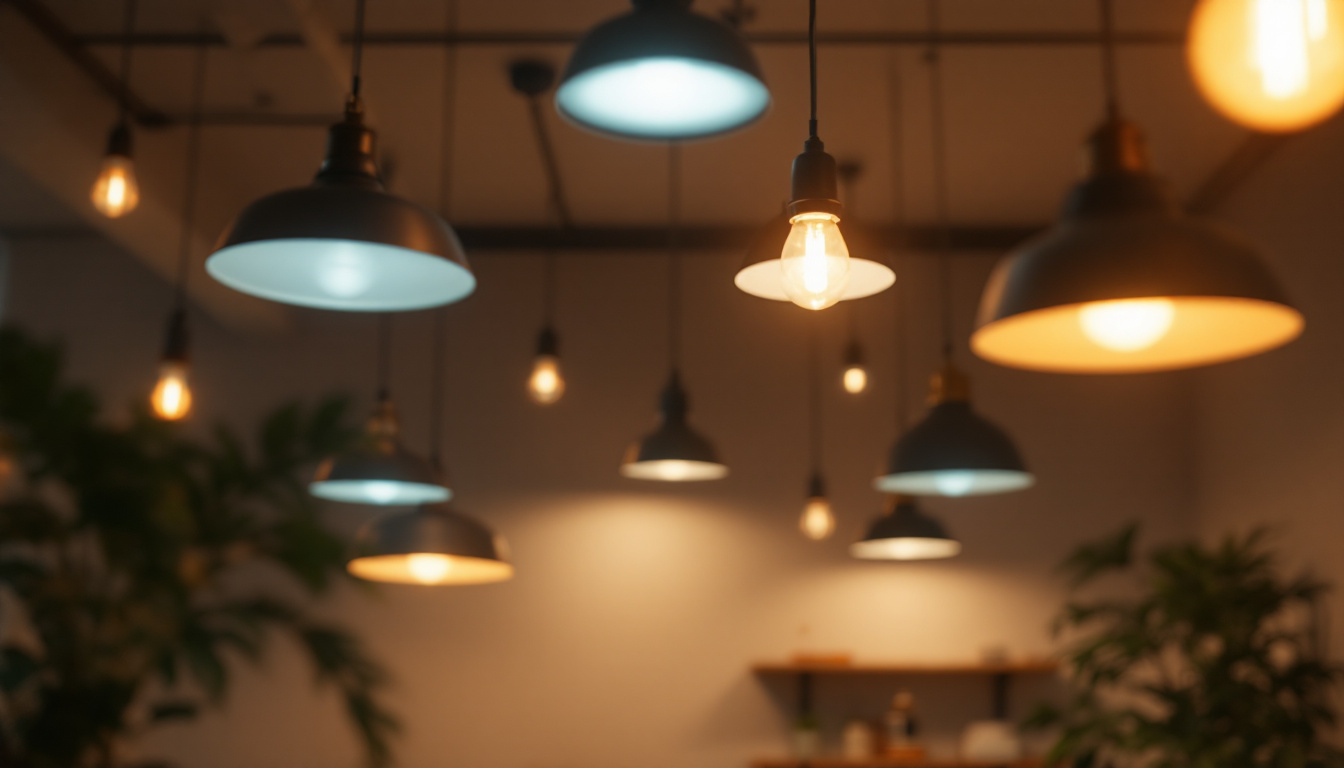

Understanding the right amount of lumens required for different spaces is crucial for lighting contractors. The lumens measure the total amount of visible light emitted by a source, and knowing how to calculate the right lumens can significantly enhance the functionality and ambiance of a space. This article delves into expert insights on determining the appropriate lumens needed for various applications, ensuring optimal lighting solutions for clients.
Before diving into specific applications, it is essential to grasp the fundamental concept of lumens. Unlike watts, which measure energy consumption, lumens quantify the brightness of a light source. This distinction is vital for contractors who aim to provide energy-efficient yet adequately illuminated environments. Understanding lumens is not just about brightness; it also involves recognizing how light interacts with different surfaces and colors in a space. For example, a room painted in dark hues may require more lumens to achieve the same level of brightness as a room with lighter colors, as darker surfaces absorb more light.
When selecting lighting, contractors must consider the type of light source, its placement, and the overall design of the space. Understanding these factors will help in calculating the required lumens effectively. Furthermore, the layout of the room plays a crucial role in lighting design. Open spaces may benefit from a combination of ambient and task lighting to ensure even distribution, while smaller, enclosed areas might only need focused light sources. This strategic approach not only enhances functionality but also contributes to the aesthetic appeal of the environment.
Various light sources emit different amounts of lumens. For instance, an LED bulb can produce significantly more lumens than an incandescent bulb while consuming less energy. Familiarity with these differences allows contractors to make informed decisions about which type of lighting to recommend to clients. Additionally, the longevity of the light source is an important consideration; LED bulbs typically last much longer than traditional incandescent or fluorescent options, which can lead to lower maintenance costs over time.
Additionally, the color temperature of the light source can affect perceived brightness. Warmer lights may appear less bright than cooler lights, even if they emit the same number of lumens. Therefore, it is essential to consider both the lumens and the color temperature when planning lighting designs. This interplay between lumens and color temperature can significantly influence the mood of a space. For example, cooler light temperatures are often associated with productivity and alertness, making them ideal for workspaces, while warmer temperatures can create a cozy and inviting atmosphere suitable for residential settings. Understanding these nuances enables contractors to tailor their lighting solutions to meet the specific needs and preferences of their clients, enhancing both functionality and comfort in the spaces they illuminate.
Determining the right number of lumens for a space involves several factors, including the room’s size, purpose, and the activities that will take place there. Here are some guidelines for calculating lumens based on specific environments.
In residential settings, the required lumens can vary significantly from room to room. For example, a living room typically requires around 1,500 to 3,000 lumens, while a kitchen may need between 5,000 and 10,000 lumens, depending on its size and layout. These calculations help ensure that each area is well-lit for its intended use.
Moreover, layering lighting in residential spaces is a popular trend. Combining ambient, task, and accent lighting can create a more dynamic and inviting atmosphere. Each layer contributes to the overall lumen count, enhancing the functionality and aesthetic appeal of the home. For instance, under-cabinet lighting in the kitchen not only adds to the overall lumens but also provides focused illumination for food preparation, making it both practical and visually appealing.
Additionally, the color temperature of the light can influence the perceived brightness of a room. Warmer light (around 2700K to 3000K) can make a space feel cozy and inviting, while cooler light (above 4000K) can create a more energetic and alert environment. This consideration is particularly important in spaces like home offices or study areas, where clarity and focus are paramount.
commercial spaces often have different lighting needs compared to residential areas. For instance, an office environment typically requires about 300 to 500 lumens per square meter. This level of brightness supports productivity and reduces eye strain for employees.
In contrast, retail spaces may require higher lumen levels to highlight products effectively. Depending on the store’s layout and merchandise, lumens can range from 2,000 to 10,000 or more. Understanding these requirements is essential for contractors working in commercial settings. Furthermore, the strategic placement of lighting fixtures can draw customers’ attention to specific displays or promotions, enhancing the shopping experience and potentially increasing sales.
Moreover, the use of smart lighting solutions in commercial environments is becoming increasingly popular. These systems allow for the adjustment of brightness and color temperature based on the time of day or the specific needs of the business. For example, a restaurant might opt for softer lighting during dinner hours to create a more intimate atmosphere, while brighter lighting might be preferred during lunch to encourage a lively and bustling environment. This adaptability not only improves the ambiance but can also lead to energy savings, making it a win-win for both the business and its patrons.
Outdoor lighting presents unique challenges and considerations. The amount of lumens needed for outdoor spaces can vary widely based on the intended use, whether for security, ambiance, or functional purposes. Additionally, factors such as the surrounding environment, the presence of natural light, and the architectural features of the space can significantly influence lighting choices. It’s essential to conduct a thorough assessment of the area to determine the most effective lighting strategy.
For security purposes, brighter lighting is often necessary. A well-lit area can deter potential intruders and enhance safety. Generally, outdoor security lighting should provide between 700 to 1,200 lumens per fixture, depending on the specific area being illuminated. Motion sensors can also be integrated into security lighting systems, activating lights only when movement is detected, which conserves energy while still providing effective illumination when needed.
Contractors should also consider the placement and angle of outdoor lights to minimize shadows and ensure comprehensive coverage. This attention to detail is crucial for effective security lighting. Moreover, the use of LED fixtures not only offers longevity and energy efficiency but also provides a range of color temperatures that can be selected to enhance visibility and create a sense of safety in outdoor spaces.
In contrast, landscape and ambient lighting require a softer touch. For these applications, lower lumen levels are typically sufficient. Pathway lights, for example, may only need around 100 to 200 lumens to create a welcoming atmosphere without overwhelming the space. The strategic use of uplighting on trees or architectural features can add depth and dimension to the landscape, transforming ordinary outdoor areas into enchanting environments.
Incorporating dimmers and smart lighting solutions can also enhance outdoor spaces, allowing clients to adjust brightness levels based on their needs and preferences. This flexibility is increasingly popular in modern outdoor design. Furthermore, the integration of color-changing LEDs can create dynamic lighting scenes for various occasions, from intimate gatherings to festive celebrations, adding an extra layer of versatility to outdoor lighting designs. As technology continues to evolve, the possibilities for creating stunning outdoor environments with lighting become even more exciting.
To assist in determining the appropriate lumens for various projects, several tools and resources are available. Lighting calculators and software can streamline the process, providing accurate estimates based on room dimensions and desired brightness levels.
Lighting design software can be invaluable for contractors. These tools often include features that allow users to input room dimensions, select light fixtures, and visualize the lighting design. By simulating different scenarios, contractors can make informed decisions about lumens and fixture placement.
Many software options also provide data on energy consumption and cost estimates, helping contractors present comprehensive proposals to clients. Utilizing these resources can enhance the professionalism and efficiency of lighting projects.
Consulting with lighting manufacturers can also provide valuable insights. Many manufacturers offer detailed specifications for their products, including lumen output and recommended applications. Building relationships with these manufacturers can lead to better product recommendations and a deeper understanding of available options.
Additionally, attending industry trade shows and seminars can expose contractors to the latest trends and technologies in lighting, further enhancing their expertise.
Even experienced contractors can fall into common pitfalls when calculating lumens. Being aware of these mistakes can help ensure successful lighting installations.
One of the most significant errors is failing to consider the room’s functionality. Each space has unique lighting needs based on how it will be used. For example, a reading nook requires brighter light than a decorative hallway. Understanding the specific activities that will take place in a space is crucial for determining the appropriate lumen levels.
Another common mistake is neglecting layered lighting. Relying solely on one type of lighting can lead to inadequate illumination and a less inviting atmosphere. By incorporating ambient, task, and accent lighting, contractors can create a more versatile and appealing environment.
Taking the time to plan and design a layered lighting approach can significantly enhance the overall quality of the project.
In conclusion, understanding how many lumens are needed for various applications is essential for lighting contractors. By considering factors such as room size, purpose, and the type of lighting used, contractors can provide optimal solutions for their clients. Utilizing tools, consulting with manufacturers, and avoiding common mistakes will further enhance the effectiveness of lighting designs.
As the industry continues to evolve, staying informed about the latest trends and technologies will ensure that contractors can meet the changing needs of their clients. By prioritizing education and collaboration, lighting contractors can create spaces that are not only functional but also aesthetically pleasing.
Ready to elevate your lighting designs with the right lumens for every space? At LumenWholesale, we’re committed to providing you with the highest quality lighting solutions at prices that make sense for your business. Our extensive range of spec-grade lighting products ensures you have access to the best options for any project, big or small. Say goodbye to local distributor markups and hello to value-packed, wholesale lighting with the convenience of free shipping. Don’t compromise on quality or cost—choose LumenWholesale for your lighting needs and experience the ultimate in affordability and convenience. Start browsing our selection today and find the perfect lighting solutions for your clients at the best value. Wholesale Lighting at the Best Value.

Discover essential insights into outdoor post top lights with our comprehensive guide tailored for lighting contractors.

Discover why purchasing stadium lights in bulk from local distributors might not be the best choice.

Discover essential insights for lighting contractors on hazardous location lighting.

Discover why purchasing fluorescent light bulbs in bulk from local distributors might not be the best choice.
Get notified when NEW deals are released.
Optimize your budget with wholesale discounts.
Only top-quality, specification-grade lighting products.
No additional costs at checkout - what you see is what you pay.
We understand the unique needs of contractors.